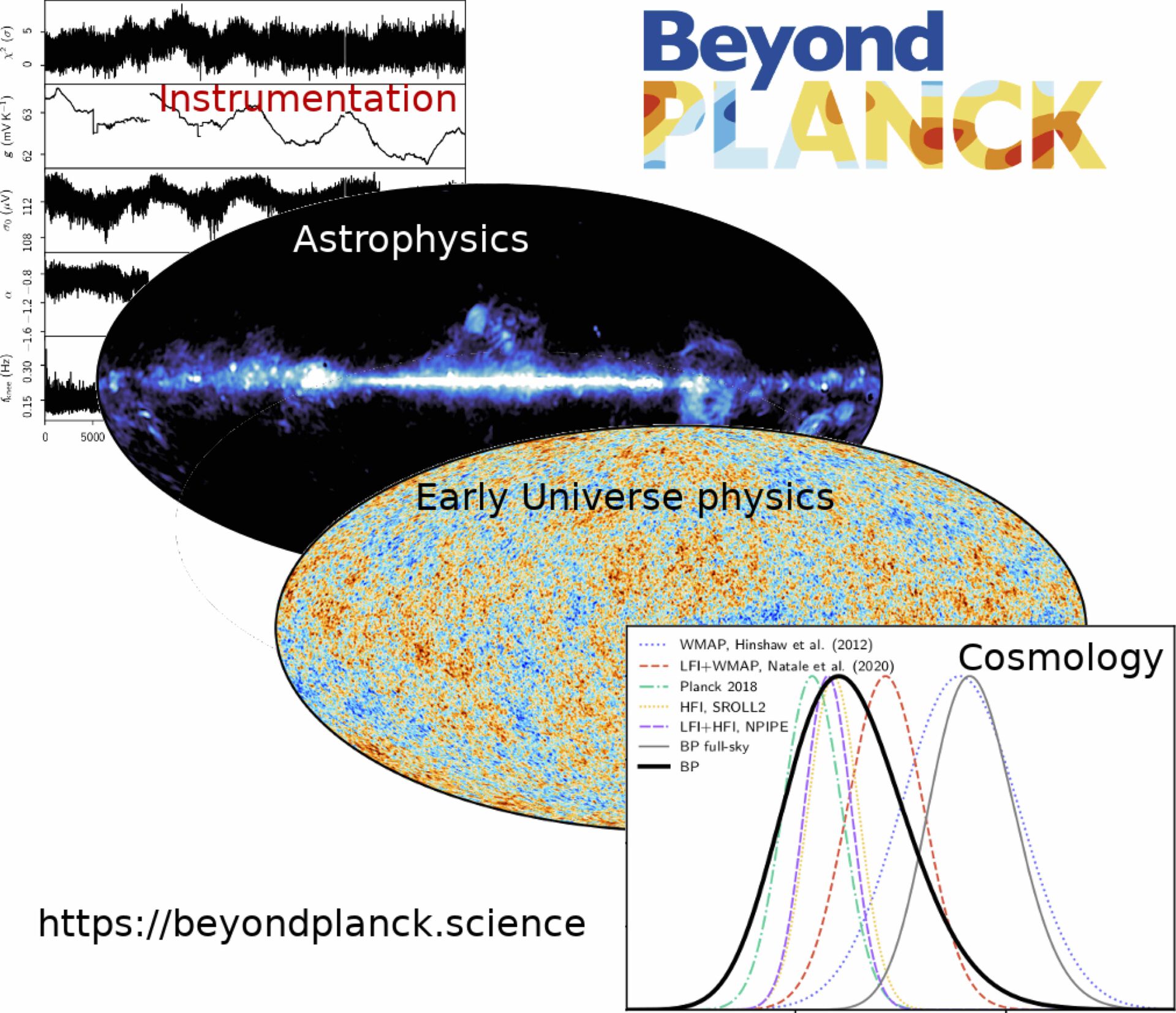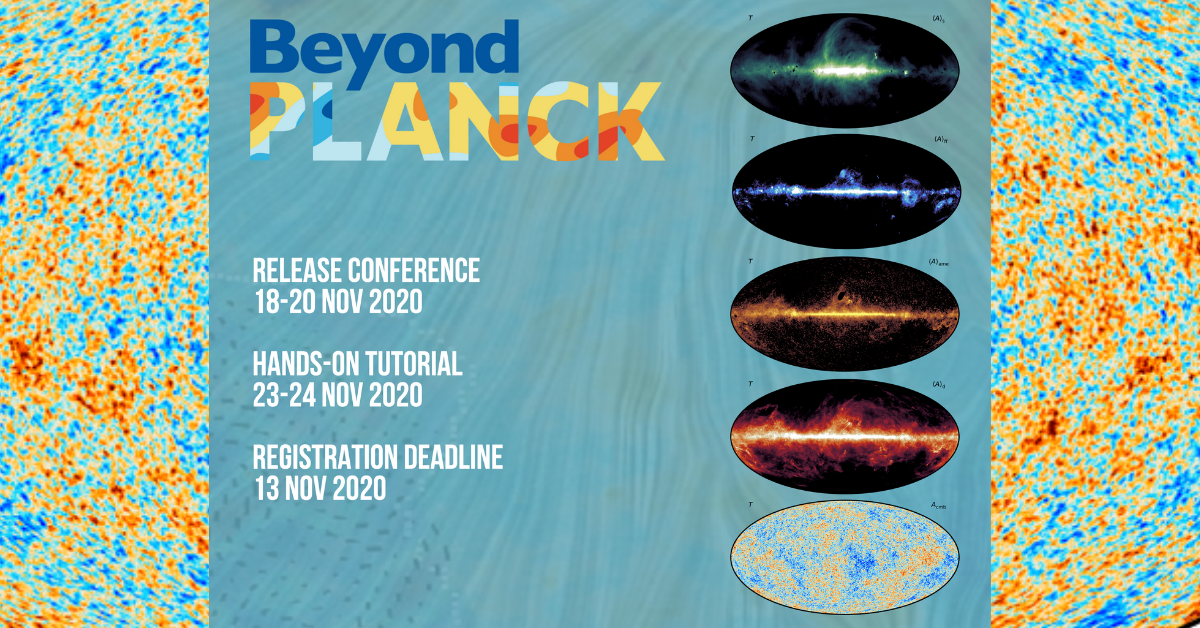
One of the biggest goals in modern cosmology is the detection of gravitational waves created shortly after the Big Bang in a hypothetical quantum-mechanical process called inflation. If such gravitational waves exist, they should be visible in the cosmic microwave background (CMB), an echo from the Big Bang, in the form of so-called B-mode polarization. However, the expected signal is extremely small, corresponding to signal variations of no more than one part in hundred millions! Detecting such a weak signal in light of real-world instrumental non-idealities and confusing foreground radiation from the Milky Way represents a tremendously difficult and interesting data analysis challenge.
 A novel approach
A novel approach
During the last two and half years, the BeyondPlanck collaboration has developed a radically new approach to this problem, aiming to describe the early Universe, the Milky Way, and the telescope all jointly within one single global parametric model! This model is then explored statistically through modern Bayesian sampling methods in one of the most complex Gibbs samplers in modern cosmology.

The BeyondPlanck - Release Conference
The results based on the scientific paper BeyondPlanck I. Global Bayesian analysis of the Planck Low Frequency Instrument data will be presented at a free online conference on November 18-20 this year. Welcome to the release conference!
